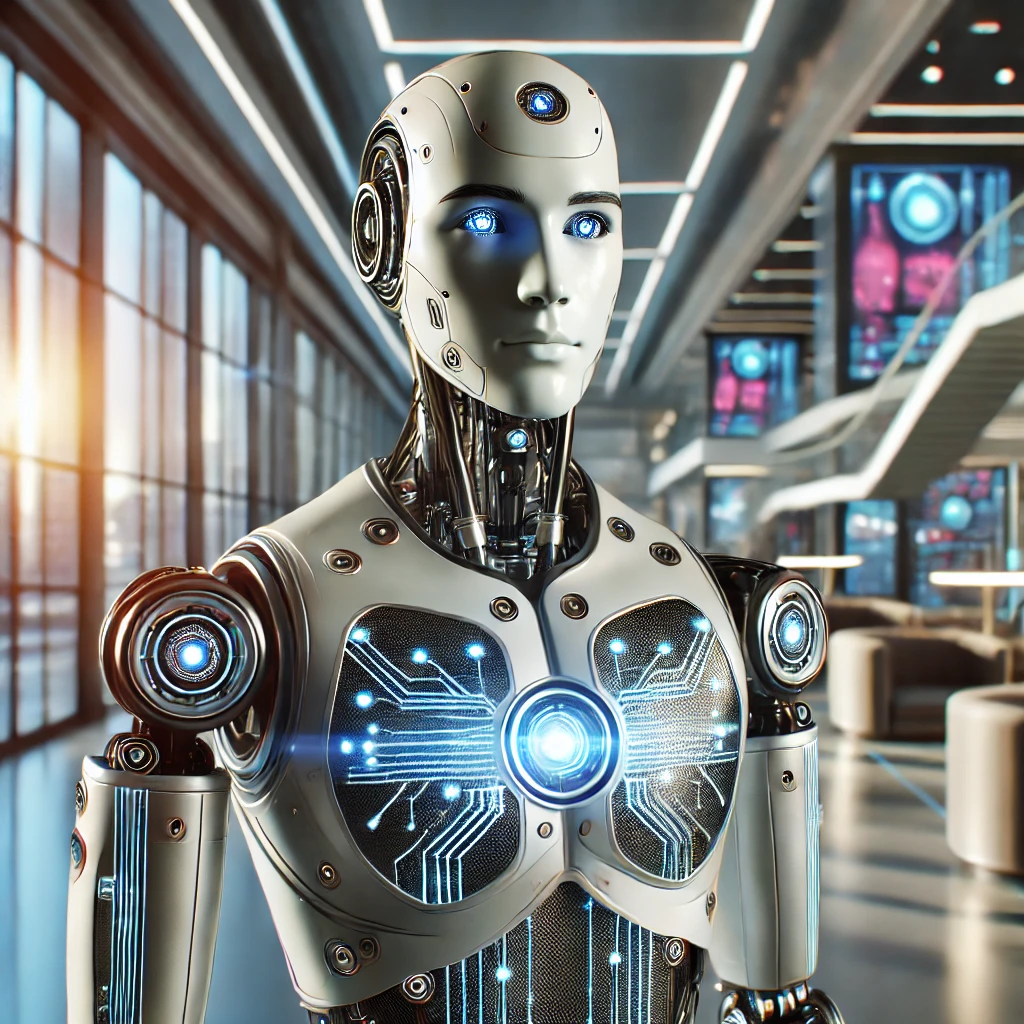Humanoid robots are transforming industries and pushing the limits of robotics because they mimic the appearance and feel of the human body. From providing healthcare support to working in hazardous environments, these robots are bridging the gap between humans and machines through advanced technology and AI capabilities
.What is a humanoid robot?
Humanoid robots are robots designed to mimic the appearance and behavior of humans. These robots, which had a head, body, arms, and legs, were frequently made to move and interact like people to sense their surroundings, make judgments, and act, advanced humanoid robots integrate artificial intelligence (AI), sensors, and actuators. Sions and take action
The main features
mobility of people
Humanoid robots are designed to walk, run, climb,b and perform complex tasks. Updated features include balance, deft hands, and movements that allow them to navigate a variety of terrains.
Artificial intelligence
AI enables humanoid robots to process information, recognize patterns, and interact naturally with humans. Over time, machine learning algorithms get better at what they do.
sensors and vision
Using cameras, LiDAR, and touch sensors, humanoid robots can sense their surroundings, find obstacles, and interact with objects with precision.
language and communication
Advanced humanoid robots can engage in natural language conversations, recognize facial expressions, and respond to human emotions.
Application of Services
- Health care
Humanoid robots help care for the elderly, at the gym, coordinate hospital supplies, and perform routine tasks to reduce the workload and socialize medical professionals. - Customer service
Robots like Pepper and Sophia are used in retail, hospitality, and banking, delivering personalized customer experiences and answering questions. - Education and Research
Educational robotics helps students learn coding, robotics, and AI. Research labs use humanoid robots to study human-robot interaction and test AI applications. - Technical and hazardous work
Humanoid robots operate in hazardous environments such as disaster sites, space exploration, and nuclear plants, reducing the risk to human workers..s
Challenges in developing humanoid robots
Complex design: Achieving human-like movement and agility is a fundamental engineering challenge.
Energy efficiency: There is an obstacle to the long-term delivery of humanoid robot energy.
Cost: Humanoid robots are expensive to build and operate, making them inaccessible.
Ethical considerations: As robots become more human-like, questions arise about their role, authority, and social impact.
The future of humanoid robots
Advances in AI, robots ICSs, and materials science are paving the way for more capable and affordable humanoid robots. In the coming decades, these robots are expected to become central to businesses, homes, and public spaces, increasing human productivity and quality of life
conclusion
Humanoid robots represent the convergence of technology,y, AI and design, and offer great potential to change how humans interact with technology. As innovation unfolds, they are poised to become indispensable allies in addressing some of humanity’s most pressing challenges Robots: The Future of Human-Machine Interaction.
Humanoid robots are transforming industries and pushing the limits of robotics because they mimic the appearance and feel of the human body. From providing healthcare support to working in hazardous environments, these robots are bridging the gap between humans and machines through advanced technology and AI capabilities.
What is a humanoid robot?
Humanoid robots are robots designed to mimic the appearance and behavior of humans. These robots, which had a head, body, arms, and legs, were frequently made to move and interact like people to sense their surroundings, make judgments, and act, advanced humanoid robots integrate artificial intelligence (AI), sensors, and actuators. Sions and take action.
The main features
mobility of people
Humanoid robots are designed to walk, run, climb, b and perform complex tasks. Updated features include balance, deft hands, and movements that allow them to navigate a variety of terrains.
Artificial intelligence
AI enables humanoid robots to process information, recognize patterns, and interact naturally with humans. Over time, machine learning algorithms get better at what they do.
sensors and vision
Using cameras, LiDAR, and touch sensors, humanoid robots can sense their surroundings, find obstacles, and interact with objects with precision.
language and communication
Advanced humanoid robots can engage in natural language conversations, recognize facial expressions, and respond to human emotions.
Application of Services
- Health care
Humanoid robots help care for the elderly, at the gym, coordinate hospital supplies, and perform routine tasks to reduce the workload and socialize medical professionals. - Customer service
Robots like Pepper and Sophia are used in retail, hospitality, and banking, delivering personalized customer experiences and answering questions. - Education and Research
Educational robotics helps students learn coroboticsobotic,s, and AI. Research labs use humanoid robots to study human-robot interaction and test AI applications. - Technical and hazardous work
Humanoid robots operate in hazardous environments such as disaster sites, space exploration, and nuclear plants, reducing the risk to human worke.rs
Challenges in developing humanoid robots
Complex design: Achieving human-like movement and agility is a fundamental engineering challenge.
Energy efficiency: There is an obstacle to the long-term delivery of humanoid robot energy.
Cost: Humanoid robots are expensive to build and operate, making them inaccessible.
Ethical considerations: As robots become more human-like, questions arise about their role, authority, and social impact.
The future of humanoid robots
Advances in AI, robotics, and materials science are paving the way for more capable and affordable humanoid robots. In the coming decades, these robots are expected to become central to businesses, homes, and public spaces, increasing human productivity and quality of life
conclusion
Humanoid robots represent the convergence of technology, A, and design, and offer great potential to change how humans interact with technology. As innovation unfolds, they are poised to become indispensable allies in addressing some of humanity’s most pressing challenges.s
